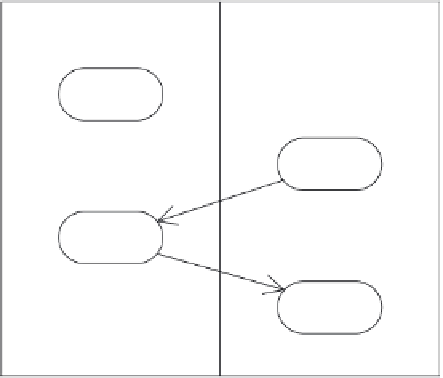Java Reference
In-Depth Information
A simple process is described by the activity diagram of Figure 21.1 It is a
simplified description of a written examination process. There are two roles
involved in this process: the teacher and the student. The process is made up
of four activities. First the teacher defines the exercise; then the student
performs it; after that the teacher corrects the student's work; finally the
student can look at the results and grade.
The WfMS does not focus on the definition of process models; it uses a
model to enact the process. The WfMS must be able to load a process model.
The WfMS maintains a catalogue of process models that can be enacted.
21.1.2
Process enactment
The enactment of a process consists in assigning the correct task to the
correct participant at the correct time. The rules for this assignment are
encoded into the process model.
The same process model can be enacted more than once at the same time.
Each instantiation of a process has its own life and evolution. The evolution
of a process during its enactment is recorded into the history of the instance.
Usually the process evolves in three phases:
First a participant instantiates a process from the catalogue of available
process models.
■
Then the workflow participants perform the activities in the sequence
required by WfMS.
■
Finally after the last activity has been completed the process instance is
terminated.
■
The assignment of activities to the workflow participants is based on
matching the roles played by the participants with those required by the
process.
Teacher
Student
Define
exercise
Perform
exercise
Correct
exercise
See
results
Figure 21.1
Example process



